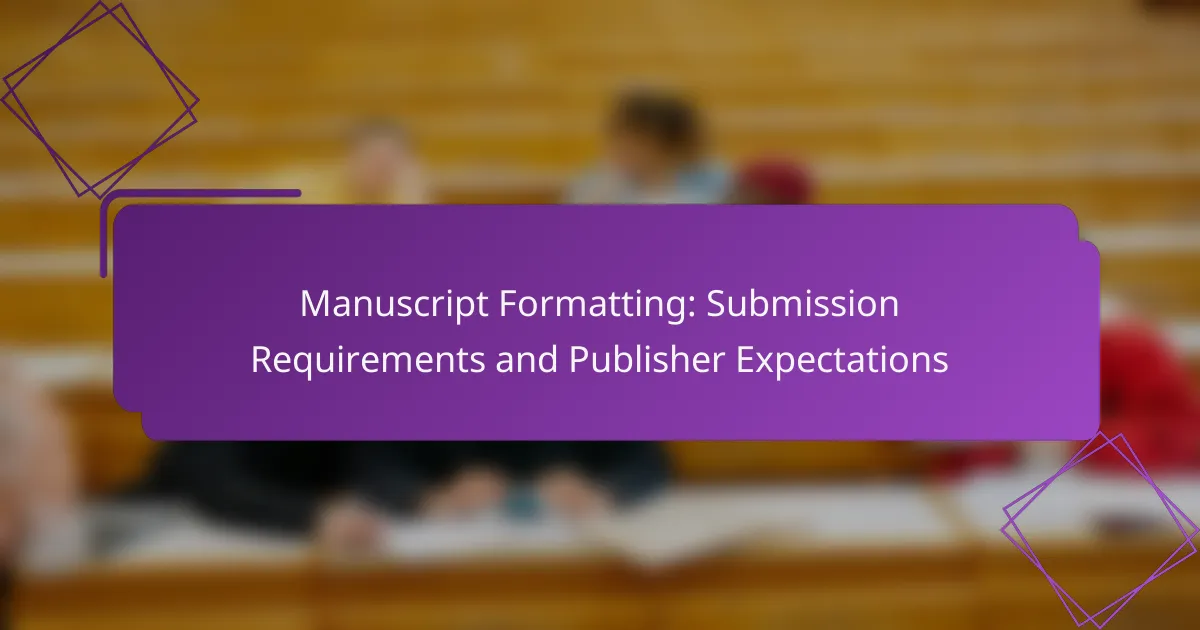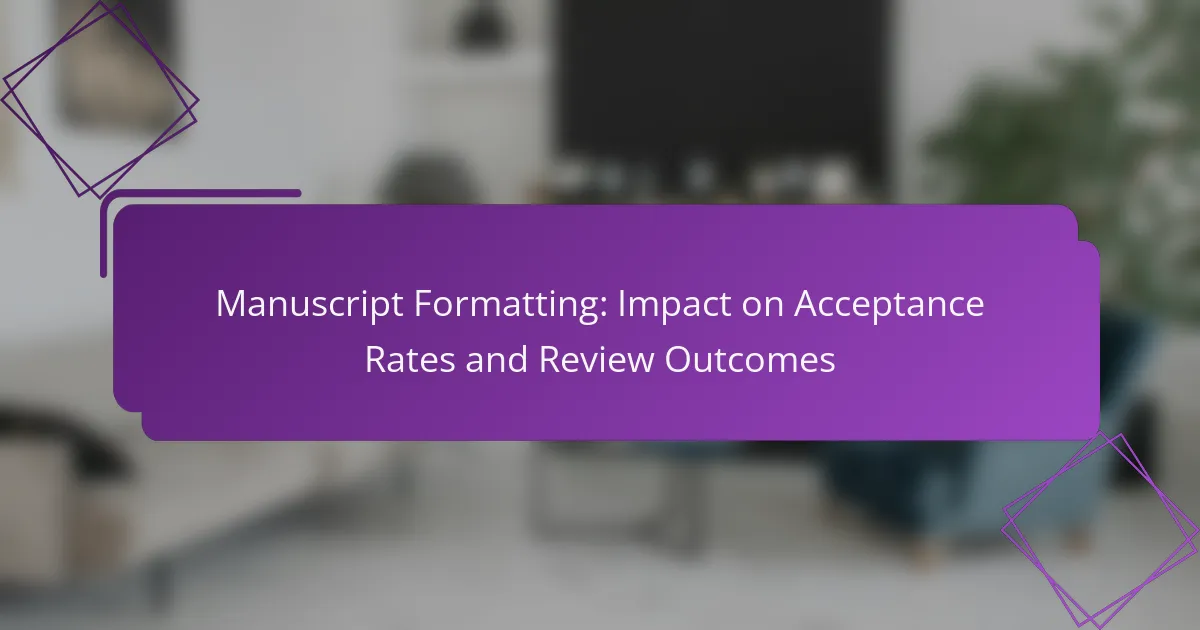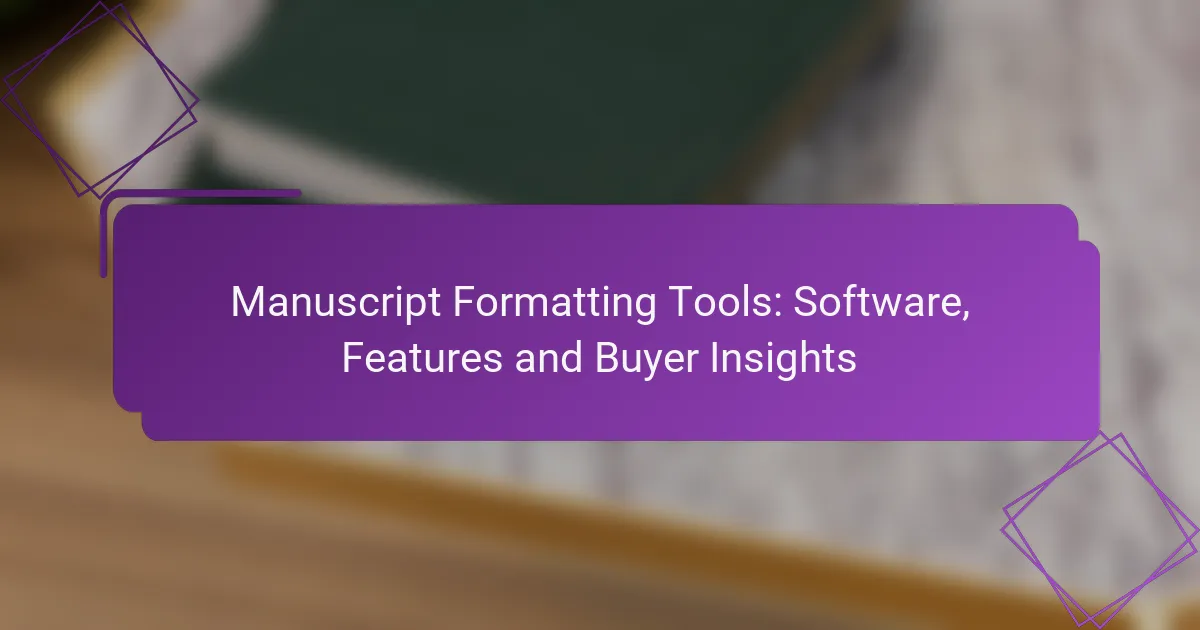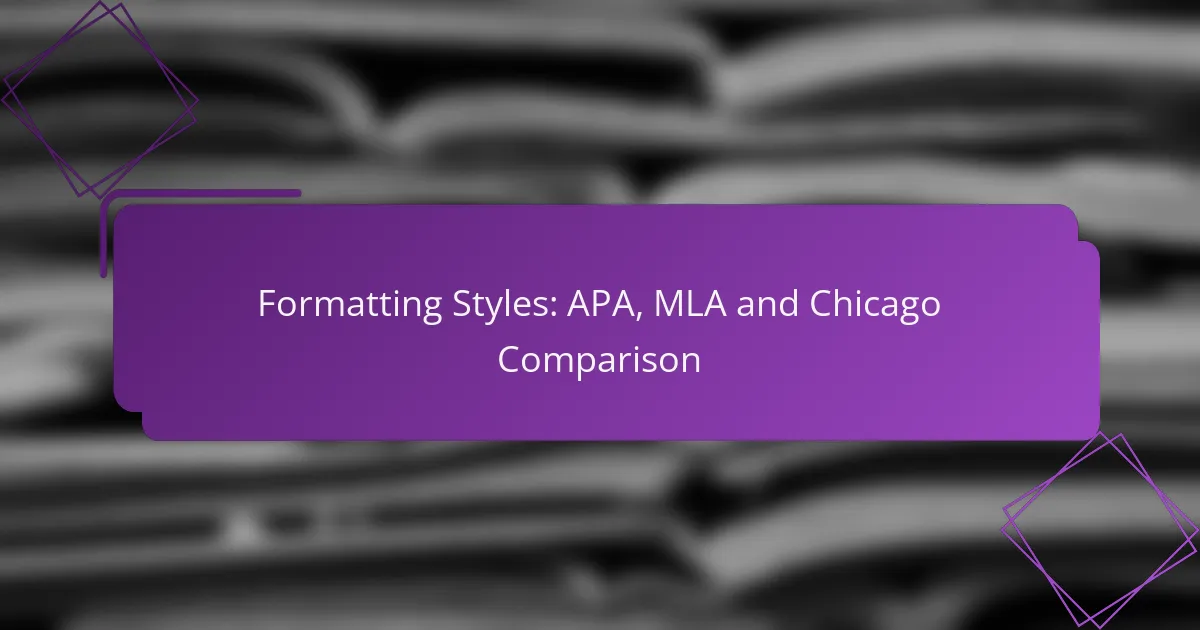When preparing a manuscript for submission, it is essential to follow the specific formatting guidelines set by publishers, which often include details on layout, font, and citation style. Proper adherence to these requirements not only enhances the readability of your work but also increases the likelihood of acceptance by making it easier for editors and reviewers to evaluate your submission.

What are the manuscript formatting requirements for publishers?
Manuscript formatting requirements for publishers vary widely, but they generally include specific guidelines on layout, font, and citation style. Adhering to these requirements is crucial for ensuring your submission is considered for publication.
Standard formatting guidelines
Most publishers expect manuscripts to be typed in a standard font, such as Times New Roman or Arial, at a size of 12 points. Margins should typically be set to one inch on all sides, and line spacing is often required to be double-spaced to enhance readability.
Page numbers should be included, usually in the header or footer, and the title page should contain the manuscript title, author(s) name(s), and contact information. It’s advisable to check the specific guidelines of each publisher for any additional requirements.
Common submission styles
Common submission styles include APA, MLA, and Chicago, each with its own set of rules for citations and references. For instance, APA style emphasizes the use of author-date citations, while MLA focuses on author-page format.
Authors should choose a submission style that aligns with the publisher’s requirements and be consistent throughout the manuscript. Familiarizing yourself with the nuances of these styles can prevent errors and streamline the submission process.
Publisher-specific requirements
Many publishers have unique formatting requirements that may include specific file types, such as Word or PDF, and guidelines for figures and tables. Some may require supplementary materials or a cover letter outlining the manuscript’s significance.
Always review the submission guidelines on the publisher’s website before submitting your manuscript. This ensures compliance with their standards and can significantly improve the chances of acceptance.

How to format a manuscript for submission?
Formatting a manuscript for submission involves adhering to specific guidelines set by publishers to ensure clarity and professionalism. Proper formatting can enhance readability and increase the chances of acceptance by making it easier for editors and reviewers to evaluate your work.
Formatting tools and software
Several tools and software can assist in formatting your manuscript according to publisher requirements. Popular word processors like Microsoft Word and Google Docs offer built-in templates and styles that can simplify the process. Additionally, specialized software such as LaTeX is favored for technical documents, providing precise control over layout and formatting.
Consider using reference management tools like EndNote or Zotero, which can help format citations and bibliographies automatically, ensuring compliance with various citation styles. These tools can save time and reduce errors in your manuscript.
Step-by-step formatting process
Begin by reviewing the submission guidelines provided by the publisher, which typically include font type, size, margins, and line spacing. Most publishers prefer a standard font like Times New Roman or Arial at 12-point size, with double spacing and 1-inch margins on all sides.
Next, structure your manuscript with clear headings and subheadings to enhance organization. Use consistent formatting for titles, section headings, and figure captions. It’s also crucial to number pages and include a title page with your name, contact information, and the manuscript title.
Finally, before submission, thoroughly proofread your manuscript for formatting consistency and adherence to guidelines. Common pitfalls include incorrect citation formats and inconsistent heading styles, which can detract from the professionalism of your work. Consider using a checklist to ensure all formatting requirements are met before sending your manuscript to the publisher.
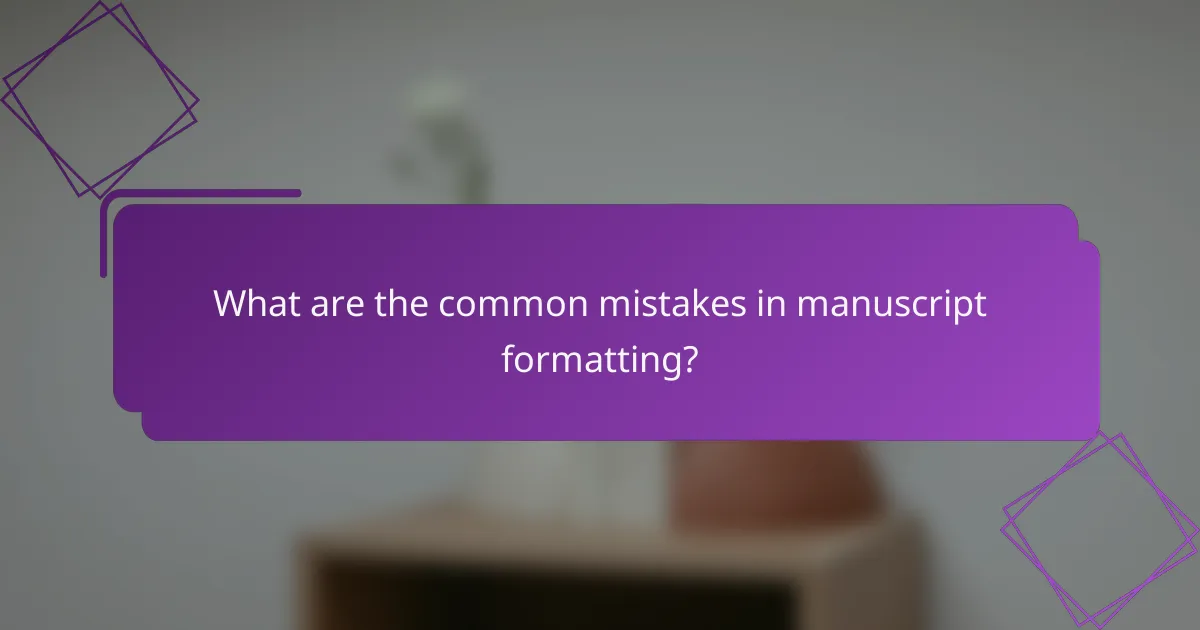
What are the common mistakes in manuscript formatting?
Common mistakes in manuscript formatting include inconsistent font usage, improper citation styles, and neglecting specific publisher guidelines. These errors can lead to delays in the review process or outright rejection of submissions.
Formatting errors to avoid
One of the most frequent formatting errors is using multiple font types or sizes within the same document. Stick to a single, professional font such as Times New Roman or Arial, typically sized between 10 and 12 points. Additionally, ensure that margins are uniform, generally set to 1 inch on all sides.
Another common mistake is failing to follow the required citation style, whether it be APA, MLA, or Chicago. Always double-check the specific guidelines provided by the publisher to ensure consistency in citations and references.
Impact of mistakes on submissions
Formatting mistakes can significantly impact the likelihood of acceptance for a manuscript. Publishers often have strict guidelines, and deviations can result in immediate rejection or requests for resubmission, wasting valuable time for authors.
Furthermore, errors in formatting can distract reviewers from the content of the manuscript itself. If a document is difficult to read or poorly organized, it may lead to negative impressions, affecting the overall evaluation of the work.

How do different publishers vary in their formatting expectations?
Publishers have distinct formatting expectations that can significantly impact the submission process. Understanding these variations is crucial for authors to ensure their manuscripts meet specific guidelines and increase the likelihood of acceptance.
Major publisher guidelines comparison
Different publishers often have unique formatting requirements regarding font type, size, margins, and line spacing. For example, while some may prefer Times New Roman, 12-point font with double spacing, others might accept Arial or require single spacing. It is essential to check each publisher’s submission guidelines thoroughly.
Additionally, some publishers may request specific file formats, such as Word documents or PDFs. A common pitfall is submitting a manuscript in the wrong format, which can lead to immediate rejection. Always verify the preferred file type before submission.
Genre-specific formatting differences
Formatting expectations can also vary significantly by genre. For instance, academic publishers may require extensive citations and a specific reference style, such as APA or MLA, while fiction publishers might focus on narrative structure and dialogue formatting. Understanding these nuances can help tailor your manuscript effectively.
Moreover, self-publishing platforms often have their own set of guidelines that differ from traditional publishers. For example, eBook formats like EPUB or MOBI have specific requirements for layout and design that differ from print submissions. Familiarizing yourself with these genre-specific standards is vital for successful publication.
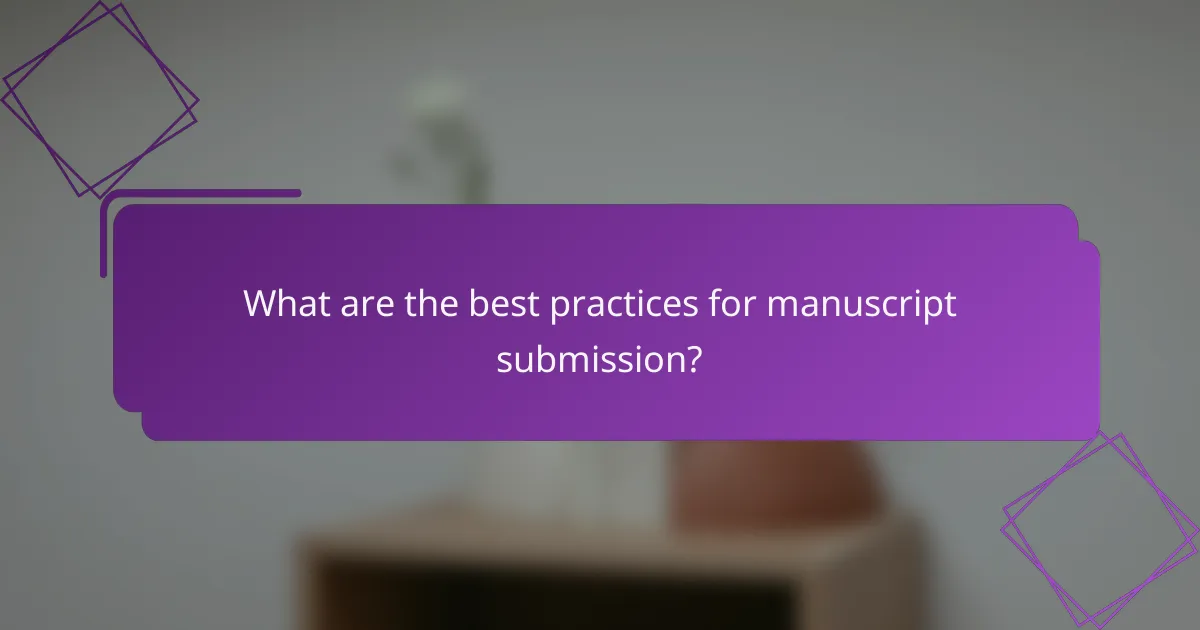
What are the best practices for manuscript submission?
Best practices for manuscript submission involve adhering to specific guidelines set by publishers to enhance the chances of acceptance. These guidelines typically include formatting, structure, and submission protocols that vary by publisher.
Submission checklist
A submission checklist is essential for ensuring that all required elements are included before sending your manuscript. Common items on this checklist include the manuscript itself, a cover letter, and any supplementary materials such as figures or tables.
- Manuscript formatted according to publisher guidelines
- Cover letter outlining the significance of your work
- Figures and tables, if applicable
- References formatted correctly
- Any required ethical statements or disclosures
Reviewing this checklist before submission can help prevent delays caused by missing components or incorrect formatting.
Tips for successful submissions
To increase the likelihood of a successful submission, tailor your manuscript to fit the specific requirements of the target journal. This includes following their style guide closely and ensuring that your work aligns with their scope and focus.
Additionally, consider seeking feedback from colleagues or mentors before submission. They can provide valuable insights and help identify any areas that may need improvement.
Lastly, be prepared for potential revisions. Many publishers expect authors to make changes based on reviewer feedback, so approach the process with an open mind and a willingness to enhance your work.

What tools can assist with manuscript formatting?
Various tools can significantly streamline the manuscript formatting process, ensuring compliance with publisher requirements. These tools range from specialized software to online resources, helping authors create polished submissions efficiently.
Popular formatting software
Several software options are widely used for manuscript formatting, each with unique features. Microsoft Word is a staple, offering templates and styles that can be customized to meet specific publisher guidelines. LaTeX is favored in scientific and technical fields for its precision and control over document layout.
Other notable software includes Scrivener, which is excellent for organizing large projects, and EndNote, which helps manage citations and references. When selecting software, consider the specific requirements of your target publisher, as some may prefer certain formats over others.
Online resources for authors
A variety of online resources provide valuable guidance on manuscript formatting. Websites like the Purdue Online Writing Lab (OWL) offer comprehensive style guides and tips for different citation formats, including APA and MLA. Additionally, many publishers provide detailed formatting guidelines on their websites, which can be crucial for ensuring compliance.
Forums and writing communities, such as Scribophile or Writers’ Cafe, can also be helpful for peer feedback on formatting. Utilizing these resources can enhance your manuscript’s presentation and adherence to submission standards.
